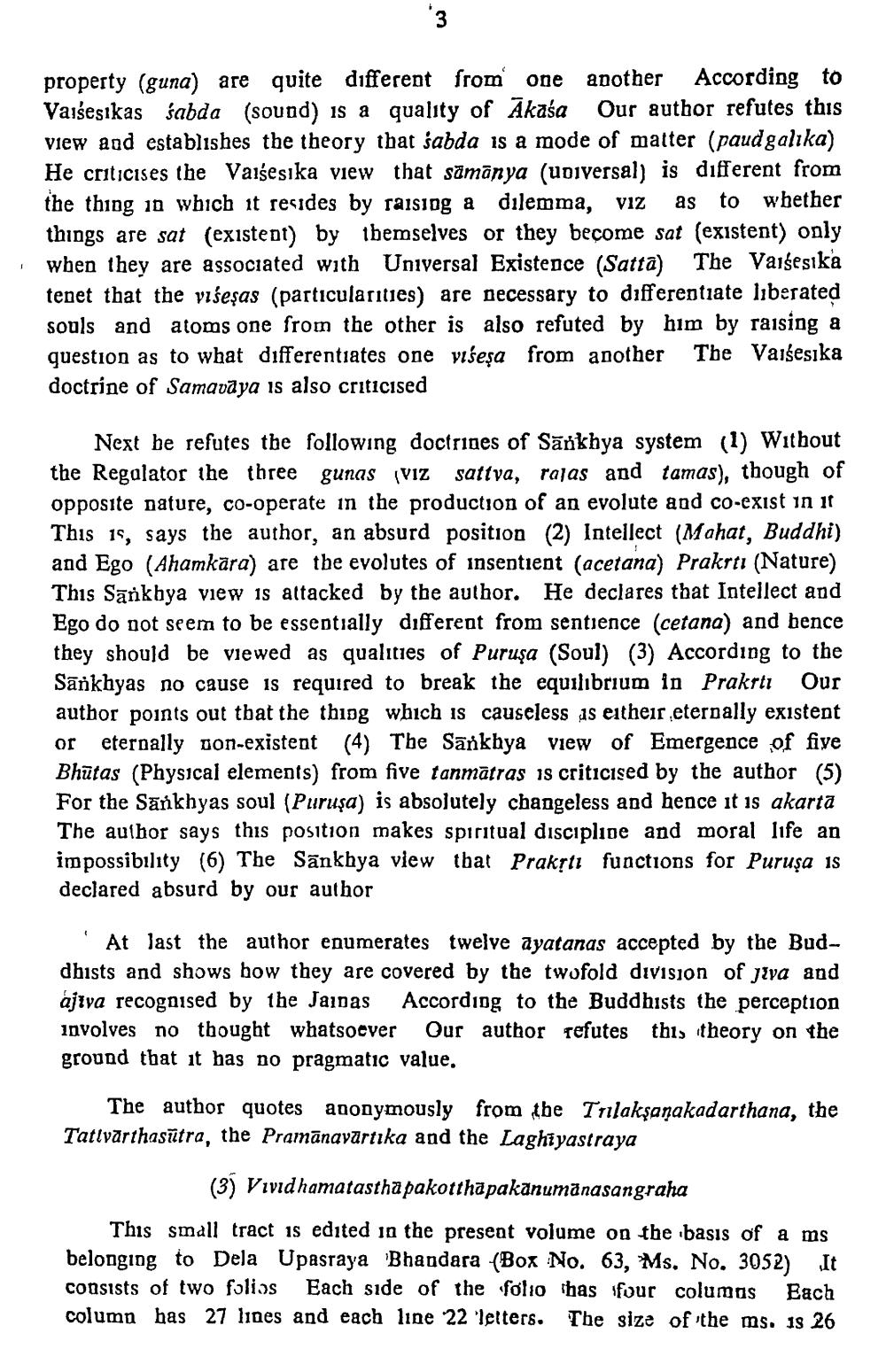________________
property (guna) are quite different from one another According to Vaišesikas sabda (sound) is a quality of Akaśa Our author refutes this view and establishes the theory that sabda is a mode of matter (paud galıka) He criticises the Vaisesika view that sämānya (universal) is different from the thing in which it resides by raising a dilemma, viz as to whether things are sat (existent) by ibemselves or they become sat (existent) only when they are associated with Universal Existence (Satta The Vaišesika tenet that the yıśeşas (particularities) are necessary to differentiate liberated souls and atoms one from the other is also refuted by him by raising a question as to what differentiates one viseșa from another The Vaišesika doctrine of Samavāya is also criticised
Next be refutes the following doctrines of Sānkhya system (1) Without the Regulator the three gunas (Viz sattya, rajas and tamas), though of opposite nature, co-operate in the production of an evolute and co-exist in it This is, says the author, an absurd position (2) Intellect (Mahat, Buddhi) and Ego (Ahamkāra) are the evolutes of insentient (acetana) Prakrtı (Nature) This Sānkhya view is attacked by the author. He declares that Intellect and
not seem to be essentially different from sentience (cetana) and hence they should be viewed as qualities of Puruşa (Soul) (3) According to the Sankhyas no cause is required to break the equilibrium in Prakrtı Our author points out that the thiog which is causeless as eitheir eternally existent or eternally non-existent (4) The Sankhya view of Emergence of five Bhūtas (Physical elements) from five tanmatras is criticised by the author (5) For the Sankhyas soul (Puruşa) is absolutely changeless and hence it is akarta The author says this position makes spiritual discipline and moral life an impossibility (6) The Sankhya view that Praksti functions for Puruşa is declared absurd by our author
At last the author enumerates twelve ayatanas accepted by the Buddhists and shows how they are covered by the twofold division of Jiva and ajiva recognised by the Jaipas According to the Buddhists the perception involves no thought whatsoever Our author refutes this theory on the ground that it has no pragmatic value.
The author quotes anonymously from the Trilakşanakadarthana, the Tatlvārthasūtra, the Pramānavārtika and the Laghiyastraya
vid hamatastha pakotthapakanumanasangraha
This small tract is edited in the present volume on the basis of a ms belonging to Dela Upasraya 'Bhandara (Box No. 63, Ms. No. 3052) It consists of two folios Each side of the folio thas four columns Each column has 27 lines and each line 22 letters. The size of the ms. 18 26




